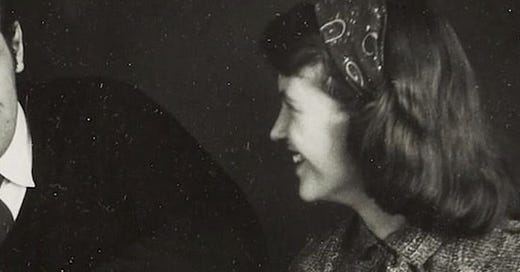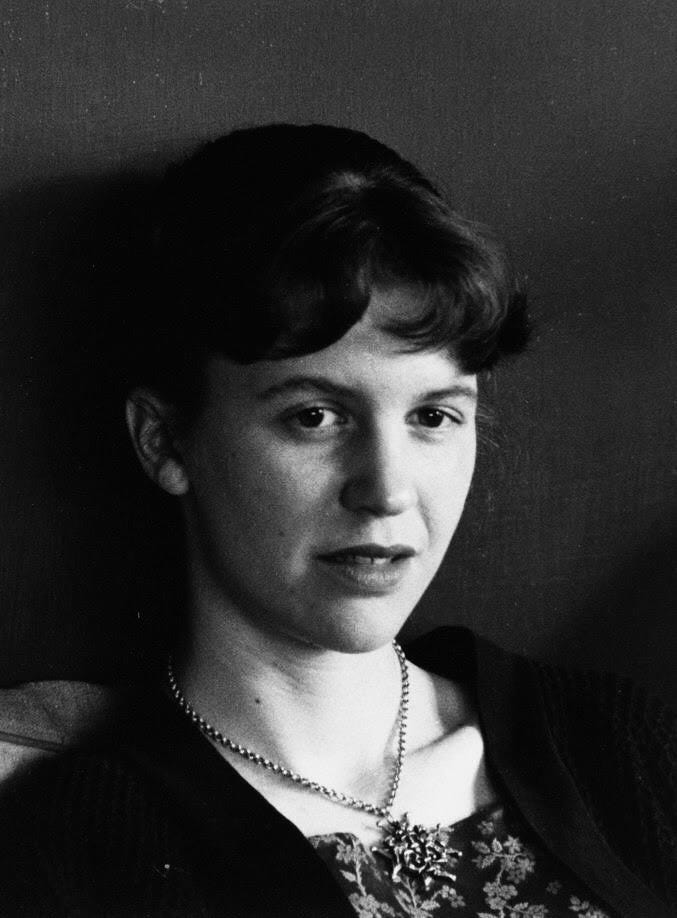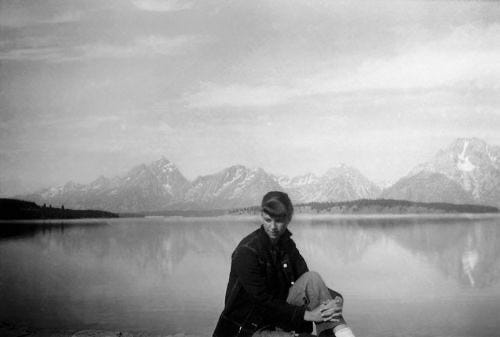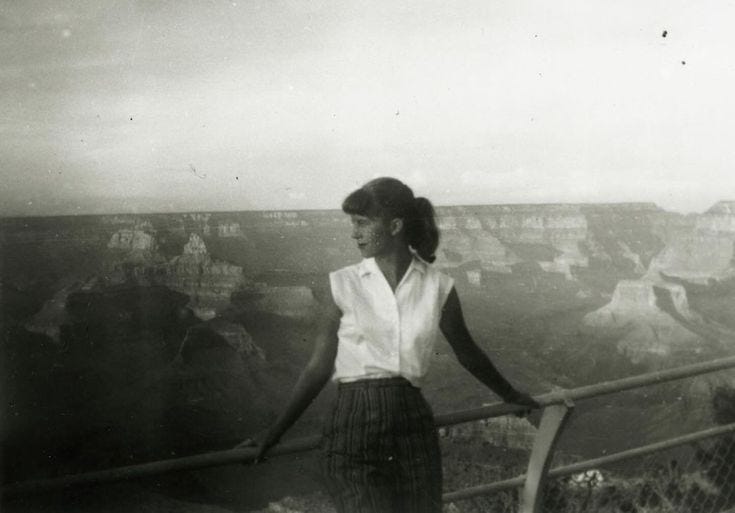‘To the person in the bell jar, blank and stopped as a dead baby, the world itself is the bad dream.’ The Bell Jar of the novel’s title refers to a bell-shaped, glass jar, used to cover specimens in a laboratory. Time and again, Esther returns to this image as an explanation of her depression and mental isolation. She is the specimen enclosed beneath the glass, becoming self-referential, inward, all-the-time inhaling the stale and stagnant air.
Sylvia Plath’s first and only novel, The Bell Jar, was published in January of 1963, under the pseudonym of Victoria Lucas. The most likely reason that a pen name was used was due to its autobiographical content, and Plath naturally wished to avoid causing any distress to friends and family. The novel was later published posthumously under her own name in 1967, and was released in the US in 1971, where it became a best seller. The contemporary American reviews were favourable. Robert Scholes wrote in his New York Times review, that it is equal parts ‘clear and readable’ as it is witty and disturbing’, declaring it ‘a fine novel, as bitter and remorseless as her last poems’ (Scholes, April 11, 1971). Elizabeth Hardwick, in the New York Review of Books, noted that it is an ‘autobiographical work […] written in a bare, rather collegiate 1950s style, and yet the attitude, the distance and bitter carelessness are colored by a deep mood of affectlessness’ (Hardwick, August 12, 1971).
Having long been an admirer of her poetry, I decided recently to take a deep dive into her prose, a medium that she explored later in life.
I am glad that I did.
In an interview in October of 1962, conducted by Peter Orr of the British Council, Plath said the following of her late fascination with prose:
“As a teenager I wrote short stories a lot, and I published short stories. And I always wanted to write the long short story—I wanted to write the novel. Now that I have attained, shall we say, a respectable age—and have had experiences—I feel much more interested in prose, in the novel. I feel that in a novel, for example, you can get in toothbrushes, and all the paraphernalia that one finds in daily life. […] I find that in a novel [in contrast with poetry] I can get more of life; perhaps not such intense life, but certainly more of life, and so I have become very interested in novel writing as a result.”
The Bell Jar’s semi-autobiographical nature lends to its tragedy, due to its being modelled on Plath’s own struggles with mental health, and mental health treatment, in the 1950s. Given how much of Plath is in her, I found a sustained interest in the protagonist, Esther Greenwood, a nineteen year old undergraduate from Boston, Massachusetts. Throughout the novel, Esther follows a path of disintegration, apathy, and deep depression. But there are also high points of joy and great feeling during her time in New York—and yes, even in the asylum that she finds herself in after her suicide attempt, there are glimmers of light.
A principle theme of the novel is in the tragic potential of youth. Esther is only nineteen, and her intellect has allowed her the opportunity to pursue any career that might interest her. The trouble with potential, however, is that when it is coupled with indecision and anxiety, it can lead to burnout and mental paralysis. Plath explores this paralysis of choice through the analogy of a fig tree:
I saw my life branching out before me like the green fig-tree in the story. From the tip of every branch, like a fat purple fig, a wonderful future beckoned and winked. One fig was a husband and a happy home and children, and another fig was a famous poet and another fig was a brilliant professor, and another fig was Ee Gee, the amazing editor, and another fig was Europe and Africa and South America, and another fig was Constantin and Socrates and Attila and a pack of other lovers with queer names and offbeat professions, and another fig was an Olympic lady crew champion, and beyond and above these figs were many more figs I couldn't quite make out. I saw myself sitting in the crotch of this fig tree, starving to death, just because I couldn't make up my mind which of the figs I would choose. I wanted each and every one of them, but choosing one meant losing all the rest, and, as I sat there, unable to decide, the figs began to wrinkle and go black, and, one by one, they plopped to the ground at my feet. (85).
‘She wants’, said the editor of Ladies Day, a magazine Esther was interning for, ‘to be everything.’ But deep down Esther knew that ‘I wanted to be a poet’ (113).
There is a similar metaphor later in the book that is less quoted than the above excerpt. When Esther’s internship in New York is complete, she returns to her mother’s house for the semester break. Sadly, she then falls into a deep depression, becoming unable to read, write, eat or sleep. ‘The reason I hadn’t washed my clothes or my hair was because it seemed so silly’, she admitted. In fact, ‘everything people did seemed so silly, because they only died in the end’ (142). Shortly before her suicide attempt, in which she would overdose on her mother’s sleeping pills, she was once again haunted by the futurity of the fig-tree, only in a far more distorted and darkened guise:
I saw the days of the year stretching ahead like a series of bright, white boxes, and separating one box from another was sleep, like a black shade. Only for me, the long perspective of shades that set off one box from the next had suddenly snapped up, and I could see day after day after day glaring ahead of me like a white, broad, infinitely desolate avenue.
The novel takes place in three distinct settings, first in New York City, then in her childhood home in Boston, and finally in a mental health asylum. The text begins in New York City, in the Summer of 1953, when Esther Greenwood ‘was supposed to be having the time of my life’ (3):
I was supposed to be the envy of thousands of other college girls just like me all over America [...] A girl lives in some out-of-the-way town for nineteen years, so poor she can't afford a magazine, and then she gets a scholarship to college and wins a prize here and a prize there and ends up steering New York like her own private car. (3).
‘Only I wasn’t steering anything, not even myself’ (3). For Esther, things didn’t feel quite right. She wanted to be a writer, a poet. Writing blurbs for the fashion magazine, Ladies Day, the purpose of her summer internship, did not stimulate her mind. So she occupied herself elsewhere. At glitzy private parties; on dates with boys; reading and writing poems. We as readers, however, begin to notice a depressive pattern in Esther’s life. She stays in bed all day, refuses to go out with friends, and becomes increasingly enclosed within herself. Towards the end of her stay in New York, she confesses that ‘It was becoming more and more difficult for me to decide to do anything in those last days’ (116).
The Bell Jar of the novel’s title is a bell-shaped, glass jar, used to cover specimens in a laboratory. Time and again, Esther returns to this image as an explanation of her depression and mental isolation. She is the specimen enclosed beneath the glass. Due to her isolation, she becomes totally self-referential, trapped, all-the-time inhaling the stale and stagnant air. ‘To the person in the bell jar, blank and stopped as a dead baby, the world itself is the bad dream’ (259). Coming back to stay in her Mother’s house after her internship in New York, Esther begins to experience steadily worsening depressive symptoms, and even desperately considers converting to Catholicism and becoming a nun. ‘I knew that Catholics thought killing yourself was an awful sin. But perhaps,’ she reasons, ‘they might have a good way to persuade me out of it’ (182). She ‘imagined myself going to some Boston priest […] I would be in black, with my dead white face, and I would throw myself at this priest’s feet and say, ‘O Father, help me’ (183). In the final months of Sylvia Plath’s life, she engaged in a correspondence with ‘Father Bart’, a young Catholic priest studying literature at Oxford. Fr. Bart had reached out to Plath for advice on his poetry, and the two struck up a lively back-and-forth pertaining to their personal views on religion, with Plath happily offering him some of her thoughts on poetics. She even asked the priest to formally bless her, a gesture he was more than happy to perform. Delighted, she wrote to her mother, Aurelia, about this new acquaintance: ‘Imagine, a Roman Catholic priest at Oxford, also a poet, is writing me and blessing me, too!’ So it would appear, from these notable mentions in The Bell Jar, that this fascination with the Church had been present in Plath’s life even a decade earlier.
But this plea to a nameless Father in a Roman collar might also have been an unconscious cry for Plath’s real father, who died when she was just eight years old. In the novel, there is a touching scene where Esther visits her dead father’s grave. Standing before his gravestone in the rain, she set some flowers down: ‘Then my legs folded under me, and I sat down in the sopping grass.’ Not having yet processed her father’s passing, she ‘couldn’t understand why I was crying so hard’, and ‘laid my face to the smooth face of the marble and howled my loss into the cold salt rain’ (185). Importantly, it was after this moment of catharsis that Esther settled on her intent to end her life. At this point in her life, the Church probably represented not so much a genuine option as an escape. While swimming with friends, a short time before her suicide attempt, Esther would feel an overwhelming urge to swim on into the distance until it was no longer possible to return, all the while feeling the familiar palpitations of an anxious soul: ‘As I paddled on, my heartbeat boomed like a dull motor in my ears. I am I am I am’ (174). The draw to escape her life felt so strong, out there in the waves, that she felt the ‘only thing to do was to drown myself then and there’ (179). After failing to keep herself submerged, however, she turned back to shore. But the longing to escape her suffering remained.
Upon experiencing regular shock-treatments under the supervision of her new psychiatrist, Dr. Nolan, Esther began to feel some relief, some healing moments in which the jar is lifted slightly, allowing breeze to pass through: ‘All the heat and fear had purged itself. I felt surprisingly at peace. The bell jar hung, suspended, a few feet above my head. I was open to the circulating air.’ (235). But there is always the gnawing doubt and anxiety that her depression would once again return. Before being released from the asylum and back into the world to complete her studies, she asks herself, ‘How did I know that someday—at college, in Europe, somewhere, anywhere—the bell jar, with its stifling distortions, wouldn’t descend again?’ (263). Soon afterwards, there was the sudden passing of her friend who had resided with her at the asylum. She had died by suicide, and her body was found in the woods near the hospital. In the last few pages of the novel, Esther attends her funeral. There, beside her friend’s gravestone, she reflects upon the fact of her being, of the sureness of her life and body, acknowledging the palpitations of her heart:









Having read the novel years ago, it was lovely to go back to it via your amazing essay on Bell Jar. Reading Sylvia has always been tumultuous yet comforting. Thanks, Andrew.
Lot of love Andrew.
I really enjoyed your post.